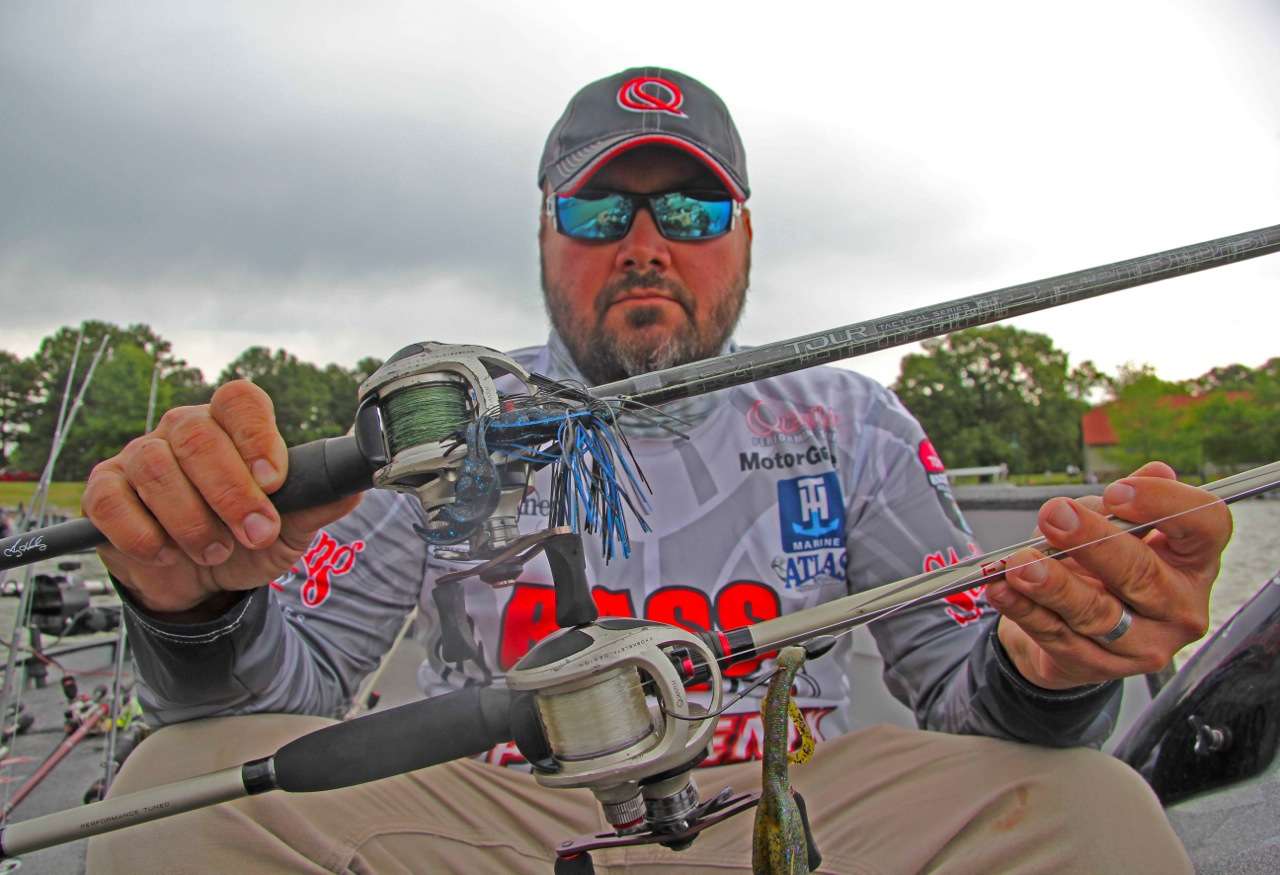
By the time the Bassmaster Elite Series event on Lake Dardanelle concludes, just about every one of the countless shallow water targets along this sprawling 34,000 surface acre portion of the Arkansas River will have had a jig or Texas-rigged soft plastic lure pitched to it at some point.
The question is “which one?” – the standard ol’ skool skirted pitchin’ jig – or a Texas rigged soft plastic?
After slapping a 21 pound 13 ounce limit of largemouth on the scales Thursday, Quantum pro Greg Hackney graciously shared his wisdom on when to reach for the jig versus the Texas rig, and vice-versa.
The Louisiana pro with a Grizzly Adams beard and a Waylon Jennings sense of independence is a very generous teacher of the sport he’s won more than $2 Million from, and largely lets time of year guide his choice of lures to pitch with.
Cold water craws call for jigs
“Typically, early in the year, when water temps are still in the 40s and 50s during the pre-spawn, it’s gonna be a jig,” says Hackney. “When bass first start coming to the bank out of their deeper winter spots, they eat pretty aggressively, they’re loading up on protein in the form of crawfish to get ready for the spawn, and a jig is obviously made to mimic a crawfish.”
When the Spawn is On
“Once the spawn is taking place, they’re not nearly as focused on eating as they are reproducing, so it seems like they prefer baits that are a little smaller, which is when Texas-rigged plastics come into play,” says Hackney.
Asked to choose just one soft plastic lure to Texas rig for the rest of his life, Hackney will roll with a Strike King Rodent, especially if the water is stained or muddy. If he encounters clearer water during the spawn, he’ll choose a 4” Strike King Game Hawg in a color like Candy Craw.
He ties both of those lures to 20-pound Gamma fluorocarbon line, typically uses a 1/4 –ounce tungsten weight, and a 7’ 6” Quantum EXO rod is his stick of choice for pitching Texas-rigged plastics to shallow habitat.
A Wrecking Ball for “Fry Guarders”
Once the spawn concludes, it’s back to the jig, and interestingly, often times a very heavy ¾-ounce jig on meaty braided line, even in shallow water. Why such a wrecking ball approach in less than 3-feet of water? Because, it’s not about the depth – it’s about banging around in branches and laydowns right near the water’s surface.
“During post-spawn, often times the bass are guarding their recently hatched fry right at the water’s surface around laydowns, and I’ll actually kinda purposely get that big jig hung-up against the branch, creating a disturbance in that thick cover, and that’s when the bass will eat it, when it’s banging against that old cedar tree limb, or whatever’s laying in the water,” explains Hackney.
“You also have a lot of bluegill spawning at about the same time bass are guarding fry. A bluegill is a pretty good meal. And to me, a jig does a great job of mimicking that larger profile,” says Hackney, who often uses green pumpkin skirts on his jigs accented by oranges and chartreuse when bluegill are the primary food source.
When the heat is on
Once the spawn is long gone, and sweat begins to run down Hackney’s forearms after each cast in the heat of summer, plastics come back into play, mostly in the form of 10” worms on deeper brushpiles and such, but he advises there’s an exception to every bass fishing rule, and warns that not every bass lives deep in the heat of summer. More importantly, he advises that those who do take up residence in water depths of 18 – 25’ often prefer a deep diving crankbait or football jig more so than both soft plastics and jigs.
When the days grow shorter
“Once that first major cold front hits in the fall, and the amount of daylight becomes less each day, it seems like jigs in shallow water come back into play again, much like they were to begin the year,” he says.
“It’s a cycle,” concludes Hackney.
And thanks to his generous teachings, knowing whether to reach for a skirted jig or a Texas-rigged soft plastic lure becomes a far easier decision – based simply on time of year.





